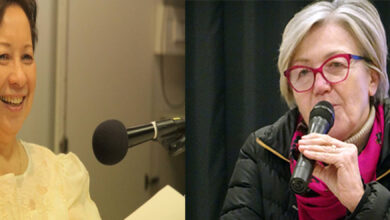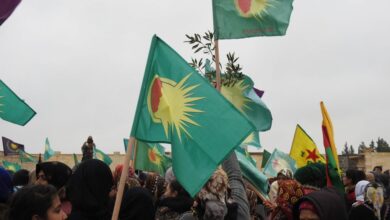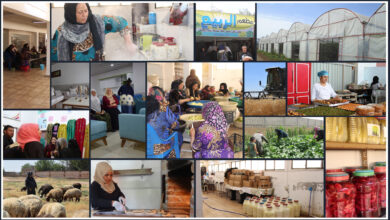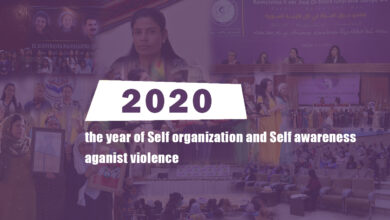19 July revolution… Radical changes that transformed face of the region
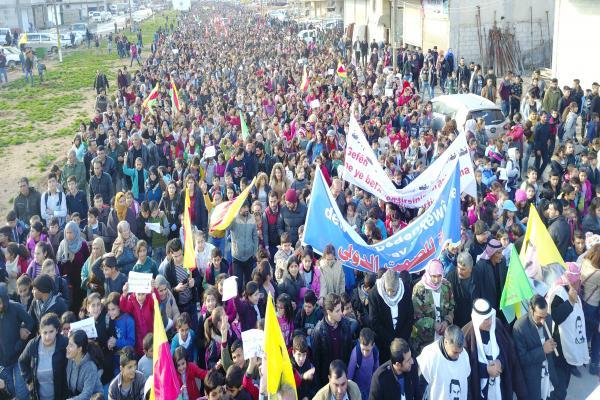
The story did not end in Kobani, but it was just a beginning. The revolution started from several cities in Rojava, namely Afrin and its surroundings, and then Qamishlo, Amuda, Darbasiya, Dêrik and other Kurdish cities in northern Syria.
The people of Rojava confronted the elements of the Syrian regime and expelled them from their positions, and clashes broke out in different areas, resulting in the fall of martyrs from the people of the region. The forces of the regime were unable to resist and were expelled from the region as a result of tremendous popular pressure.
The revolution, as it was initially called, started from the city of Daraa in March 2011, began to spread in the cities of the north and Syrian interior, one city after another fell from the grip of the Syrian regime, which was reacted to all opponents with violence.
Revolution according to the third line!
Consciously and carefully planned, the Rojava rebels did not fall into the trap of the Syrian crisis, and did not become involved in the conflict, which soon turned into an armed conflict, a civil war between opponents of the Syrian regime and a number of mercenaries against elements of the regime and its Iranian and Russian supporters.
The rebels adopted the “third approach”, saving them from turning to pawns at foreign hands.
Thanks to this approach, the children of Rojava took their region in a vicious war that would have exacerbated the crisis in Syria.
While the conflict was intensifying on Syrian soil, the people of the region worked to build their political, military, service and social institutions, to organize life in the region and to bring about the change they had taken to streets for.
With painful memories of the past… they built a prosperous present
With the memories of a painful past of repression, the suppression of freedoms and the violation of the most basic rights, thousands of people of Rojava joined the revolution, announcing the end of a black era and the beginning of another era.
The Syrian regime, which has been dominated by the Baath Party for decades, has been using the worst policy against the people of Rojava. The Kurds were prevented from speaking the Kurdish language and considered foreigners. They refused to grant them the Syrian identification card and following the policy of Arabization in the Kurdish areas; the one flag, one party and one language.
But Rojava revolution brought about a new stage in the region, where changes began to emerge from the first months of the revolution.
The Kurds, the Arabs and all the components in Rojava run the region. They follow policies that serve the region before any other consideration, and enable the Kurds to manage the wheel of education so that each component can teach its mother tongue at school, unlike the former, where Arabic was the only language.
Threats the revolution faced… The people depend on their own strengths
The revolution in Rojava and its gains on the ground, unlike the situation in the rest of the Syrian regions, upset regional parties that intervened in the Syrian revolution, which turned into a real crisis later on.
These forces began to lurk through their agents on Syrian soil. The first threat to the revolution in northern Syria came from groups calling themselves the “Free Army” and other mercenary groups from Jabhet al-Nusra.
These groups launched strong attacks on the southern regions of al-Jazeera region in northeastern Syria. The most severe attacks in the city of Serê Kaniyê of Hasakah in 2013 led by the “Jabhet al-Nusra “, with clear and public Turkish support and guidance.
Afrin and Kobani witnessed similar attacks, but the most prominent challenge was in Serê Kaniyê, which faced great aggression. It was the first real test that the People’s and Women’s Protection Units passed.
These attacks were the first attempt to abort and defeat Rojava revolution, but after the resistance, the people of the region won.
From the first day until the end of 2014, the people of Rojava region were standing in defense of the gains they had made in the context of the revolution, and the attacks on the region were non-stop.
Autonomous Administration in the midst of attacks
The year of 2014 was a turning point in the history of Rojava revolution and the region as a whole. At the time, the people of Rojava announced the establishment of the Democratic Autonomous Administration (DAA) consisting of three cantons: Al-Jazeera, Kobani and Afrin. Each region chose its administrative structure (Executive-Legislative and Judicial) and in the context of these departments, service, cultural, security, educational, administrative, civil and social institutions were built.
These administrations have ensured that the process of managing the region, which has seen a resurgence from all sides, has become apparent.
Kobani turning point again
No one disputes that Kobani has become a turning point in the course of the Rojava revolution again when the city repelled a strong attack offensive of Daesh early 2015.
In mid-September 2014, Daesh launched a strong attack against Kobani canton starting from three axes, while the fourth was from Turkey, one of the DAA regions, situated at the center of the other cantons was at risk of falling.
Daesh was considerably strong and never lost any battle before, but lost the battle of Kobani before the People’s and Women’s Protection Units (YPG, YPJ), which fought a bloody street war for 134 days.
If Kobani fell at that time, the cantons of al-Jazeera and Afrin were threatened to collapse, which meant the collapse of the revolution, but things reverberated by the efforts of the people of the region who faced Daesh.
After the liberation of Kobani in January 26, 2015, the region entered a new phase. Campaigns began to clear the area of mercenary groups, and the revolution moved from defense to liberation.
The war against Daesh has changed the scales
Starting from the city of Kobani, the war began against Daesh, which spread in 2014 and 2015 in Syria and Iraq to occupy a vast area of the two countries, and the Iraqi and Syrian armies were unable to confront it.
The People and Women’s Protection Units, which gained the confidence of the international community after their steadfastness in the city of Kobani, were able to defeat Daesh in a number of northern Syrian cities, most notably the cities of Girê Spi / Tel Abyad, Manbij, Raqqa, Deir Ez-Zour and other dozens of towns and districts.
As the Syrian Democratic Forces(SDF) undertook in 2015 the fighting against Daesh in the northern and eastern regions and could end Daesh successfully, the balance of power in the region changed. Bets failed and the will of Rojava revolution prevailed.
The revolution produces an exemplary administrative model
Having eliminated and defeated Daesh in the northern and eastern areas of Syria, the people of the region worked to build a special administrative form of the region represented by the Autonomous Administration.
There are seven autonomous administrations in the north and east of Syria (the Euphrates, Jazeera, Afrin, Manbij, Raqqa, Tabqa and Deir ez-Zor).
The components of the region are Kurds, Arabs, Circassians, Syriacs, Armenians. This is the first time that such an administration is formed to assume the responsibilities of managing this region.
Perhaps the most important outcome of the revolution was this form which enabled the people to participate directly and equally in the management of their regions, unlike previous periods in which the central government lacked democracy, justice and equality.
The participation of the people of the region directly in the protection of their land within the Syrian Democratic Forces and the internal security forces are one of the distinctive things created by the revolution.
Now, the people of northern and eastern Syria depend on themselves to protect the region against any external threats.
Economically speaking, the Autonomous Administrations institutions were able to achieve self-sufficiency which is considered one of the remarkable fruits of the revolution, the region and after 7 years of the revolution, despite the four-axis siege, they depended on their own potential to secure all supplies.
Not to mention the renaissance at the economy sector where life returned after defeating Daesh; hundreds of projects were opened achieving self-sufficiency for the region and contributed to the growth of the wheel of the economy, although the region is still tense.
In the education sector, the educational policy was very different from the pre-revolution era. There are now three languages taught in schools: Armenian, Arabic and Kurdish.
The education wheel has not ceased to circulate, although the region has been in a state of war for several years, unlike other areas in Syria where schools have not been open for years, especially those that have been dominated by Daesh.
Continuing threats facing the revolution
Doubtlessly, those who threaten the security of the Syrian territory and its unity do not stop doing so the region either directly or through agents in the region, as happened with Turkey and formerly Daesh, and groups of mercenaries from al-Qaeda currently.
From the first day of the revolution to the present day, regional and local parties are still trying to pursue hostile policies aimed at thwarting the revolution and striking the gains it has made.
Perhaps the most important threat to the region is the Turkish state, which sees the revolution of Rojava and developments in northern Syria a threat to it!
Many parties, such as Iran, the Syrian regime, Russia and other countries, do not like everything that happens in this region, so the region is witnessing tensions and attempts to create strife and conflict between the components and sects that coexist in the region.
Although the DAA areas now live in a state of security and stability not found in the rest of the Syrian territories, whether controlled by the regime or those Turkey occupies, but this does not satisfy those who have interests contrary to the interests of the people of the region.
Many believe that the Autonomous Administration model applied in the northern and eastern Syria is an ideal administrative model for managing the region. It ensures the participation of all the people in the region in the management process, guarantees the rights of all components, preserves freedom of belief and opinion and is an unparalleled democratic system in the region.

